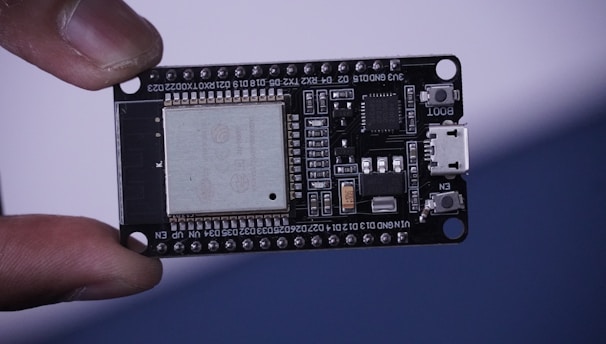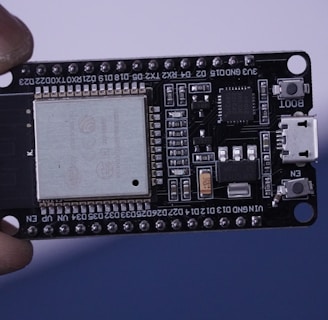ESP32 WROOM-32


Introduction to ESP32 Wroom-32
The ESP32 Wroom-32 is a versatile and powerful microcontroller that has gained immense popularity in the world of embedded systems and IoT (Internet of Things) development. Developed by Espressif Systems, this compact module is based on the ESP32-D0WDQ6 microcontroller chip, offering a rich set of features and capabilities. It is widely used by electronics enthusiasts, engineers, and professionals for a wide range of applications.
Key Features of ESP32 Wroom-32
1. Dual-Core Processing
One of the standout features of the ESP32 Wroom-32 is its dual-core processor architecture. It houses two Xtensa LX6 microprocessor cores, each capable of running independently. This dual-core setup enables multitasking and efficient handling of complex tasks, making it ideal for applications requiring real-time performance.
2. Wireless Connectivity
The ESP32 Wroom-32 comes equipped with built-in Wi-Fi (802.11b/g/n) and Bluetooth (v4.2) capabilities. This dual wireless communication capability allows seamless connectivity to the internet and other Bluetooth-enabled devices. Whether you need to create IoT devices that require internet connectivity or Bluetooth-based applications, the ESP32 Wroom-32 has you covered.
3. Rich Peripheral Set
The module provides a rich set of peripherals, including GPIO (General-Purpose Input/Output) pins, SPI (Serial Peripheral Interface), I2C (Inter-Integrated Circuit), UART (Universal Asynchronous Receiver-Transmitter), PWM (Pulse-Width Modulation) channels, and more. These peripherals offer versatility for interfacing with various sensors, displays, motors, and other external components.
4. Low Power Consumption
Energy efficiency is a crucial consideration for many IoT applications. The ESP32 Wroom-32 is designed with low-power modes, allowing it to operate efficiently and extend battery life. This feature is invaluable for battery-powered devices that need to run for extended periods without frequent recharging.


Specifications of ESP32 Wroom-32:
Microcontroller: ESP32-D0WDQ6
Flash Memory: 4MB
Dimensions: 18mm x 25.5mm
Operating Voltage: 2.2V to 3.6V
CPU Frequency: Up to 240 MHz
GPIO Pins: Multiple GPIO pins with various functionalities
Operating Temperature: -40°C to 85°C
Peripherals of ESP32:
Programmable GPIOs (General-Purpose Input/Output):
Number: The ESP32 has a total of 34 programmable GPIO pins.
Function: GPIO pins can be configured as inputs or outputs and used for various purposes, such as connecting sensors, controlling external devices, or receiving digital signals.
ADC Channels (Analog-to-Digital Converter):
Number: There are 18 ADC channels available.
Function: ADC channels allow the ESP32 to convert analog voltage levels (from sensors or other sources) into digital values for processing. This is useful for reading analog sensors like temperature sensors.
DAC Channels (Digital-to-Analog Converter):
Number: There are 2 DAC channels.
Function: DAC channels allow the ESP32 to generate analog voltage signals. This is useful for tasks like audio generation or controlling analog devices.
PWM Channels (Pulse-Width Modulation):
Number: The ESP32 offers 16 PWM channels.
Function: PWM channels are used to generate pulse-width modulated signals, which are often used for tasks like controlling the brightness of LEDs or the speed of motors.
UART Interfaces (Universal Asynchronous Receiver-Transmitter):
Number: There are 3 UART interfaces.
Function: UART interfaces are used for serial communication. They allow the ESP32 to communicate with other devices using a simple, serial protocol.
SPI Interfaces (Serial Peripheral Interface):
Number: There are 3 SPI interfaces.
Function: SPI interfaces are used for high-speed, full-duplex serial communication between the ESP32 and other devices like sensors, displays, or external memory.
I2C Interfaces (Inter-Integrated Circuit):
Number: There are 2 I2C interfaces.
Function: I2C interfaces are used for connecting multiple devices on the same bus. It's a popular protocol for sensors, EEPROMs, and other peripherals.
I2S Interfaces (Inter-IC Sound):
Number: There are 2 I2S interfaces.
Function: I2S interfaces are used for high-quality audio data transmission. They are essential for tasks like audio recording and playback.
Capacitive Touch Sensing GPIOs:
Number: There are 10 GPIO pins dedicated to capacitive touch sensing.
Function: These GPIO pins are designed for touch-sensitive applications, allowing you to create touch interfaces or capacitive touch buttons.
Additional GPIOs:
Number: There are 16 more GPIO pins.
Function: These GPIO pins can be used for various purposes as needed for your project. They offer flexibility in connecting additional sensors or peripherals.
Applications:
Smart industrial devices, including Programmable Logic Controllers (PLCs)
Smart medical devices, including wearable health monitors.
Smart energy devices, including HVAC and thermostats.
Smart security devices, including surveillance cameras and smart locks
All IoT Projects


